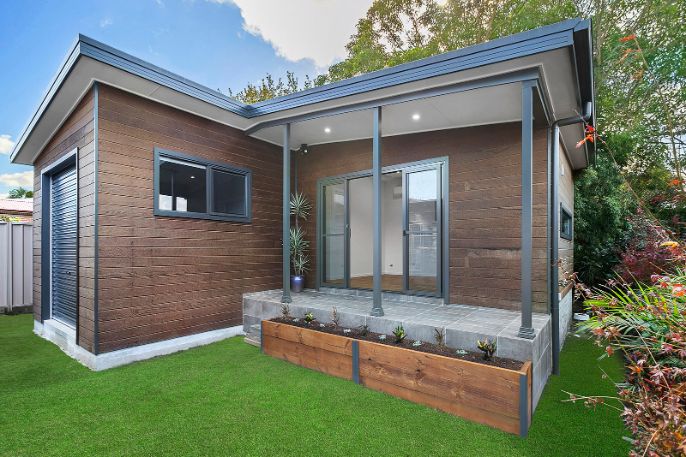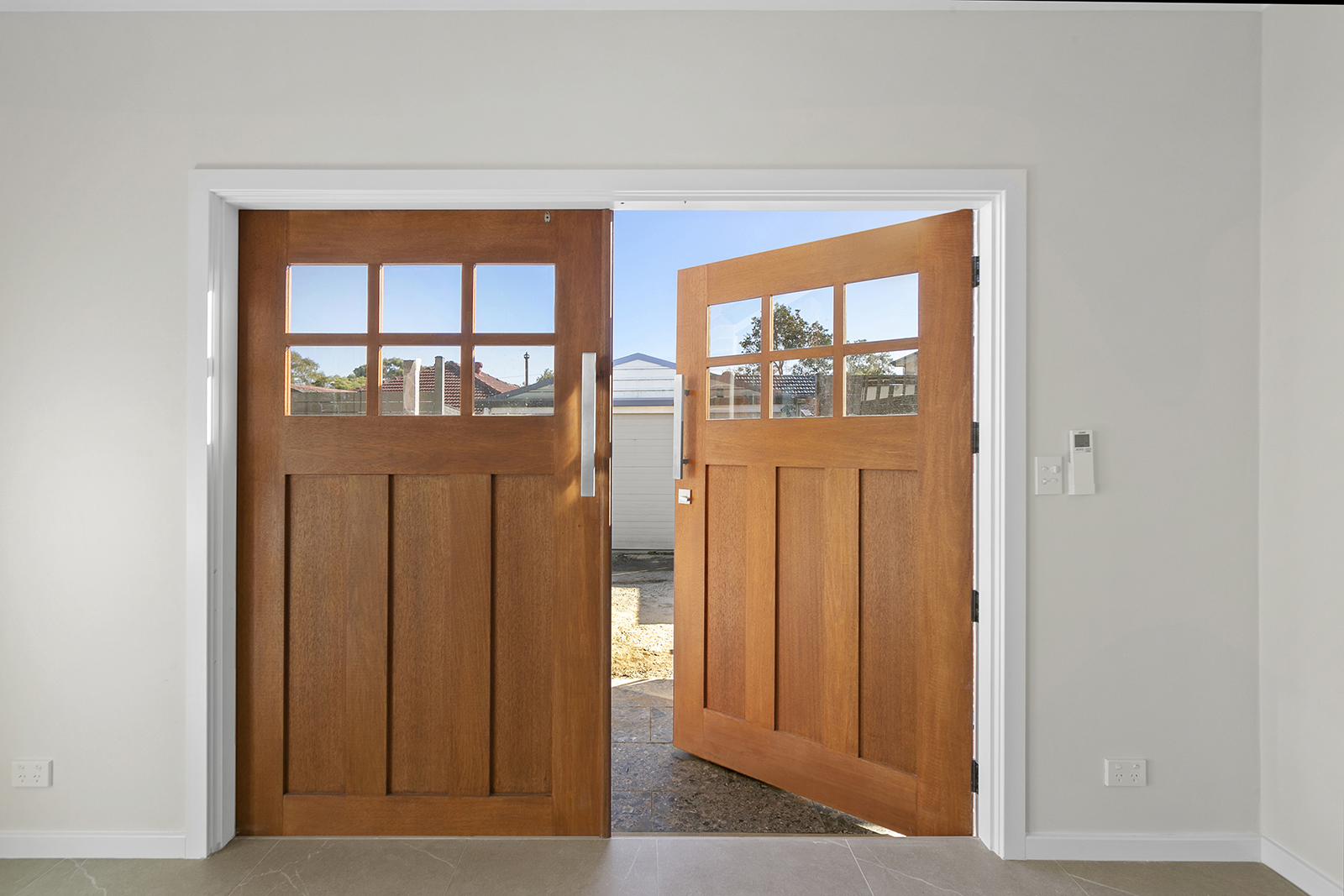



Get in touch
with us today…
Contact us for a private viewing to see a granny flat in your area today!

Employment Opportunities
We are always open to hiring motivated and creative workers who share our same passion to provide high-quality dwellings and attentive customer service.
If you are interested, please submit your details and resume.
Are Granny Flats a Good Investment? – Benefits & Drawbacks

Granny Flats have become increasingly popular in recent years as a way to provide affordable housing options and generate additional income for property owners. However, many investors are unsure if a Granny Flat is a good investment for their specific circumstances.
In this article, we’ll explore the pros and cons of investing in a Granny Flat to help you make an informed decision.
How Much Value Does a Granny Flat Add to My Property?

You’re probably wondering how much difference building a Granny Flat will make to your bottom line.
Interestingly, secondary dwellings have been the pick of the bunch for NSW property investors trying to maximise the value of their property, especially since the introduction of the Affordable Housing SEPP in 2019.
With rising interest rates, homeowners and property investors alike are looking for opportunities to derive rental income from their property.
Building a Granny Flat, either on your investment property or primary dwelling, will secure capital growth and increase your property value by up to 30% depending on the location and demand.
At the same time, a Granny Flat will generate a passive rental income of between $300–$700 per week. The high return on investment (ROI) means that Granny Flats do a great job of paying themselves off!
A Granny Flat investment is a great way to optimise your property investment and get ahead in the Australian property market.
Benefits of Investing in a Granny Flat
- Increased property value.
- Boosts rental income.
- Return on investment (ROI).
- Positively geared investment.
- Tax depreciation entitlements.
- Fast repayments.
- Quicker approvals.
Increased Property Value
Building a Granny Flat not only increases your living space, but it can boost the property value by up to 30%. That’s especially the cherry on top if you aim to sell at some point in the future.
As self-contained dwellings, Granny Flats will earn you added rental income before you sell and attract a wider net of potential buyers.
Boosts Rental Income
It comes as no surprise that a Granny Flat investment offers a great opportunity to earn more money.
According to the Australian Housing and Urban Research Institute (AHURI), adding a Granny Flat to a property can increase rental income by up to 30%.
The extra income can offset mortgage payments or help build a nest egg.
Return on Investment
A Granny Flat investment property is a cost-effective asset for investors. By the same token, they offer an affordable housing option for tenants. Building a Granny Flat on your property could haul in an average ROI of around 20%.
Considering this won’t burn a hole in your pocket, like buying a separate standalone investment property can, it’s no wonder Granny Flats are seen as such a lucrative investment.
Positive Geared Investment Property
As a self-contained home, a secondary dwelling can change your property from a negatively geared investment to one that is positively geared. Many Granny Flats are benefitting from a positive cash flow of over $12,000 per year after interest.
Tax Depreciation Entitlements
Like most rental properties, a Granny Flat offers substantial tax depreciation entitlements. Set at a minimum of 2.5%, Granny Flat depreciation will allow you to claim wear and tear as time goes on. A depreciation schedule can be organised through a surveyor.
Fast Repayments
Since a Granny Flat reels in a second income, you can pay off your mortgage faster. This means you can purchase more investment properties and continue to reap the rewards of the greater ROI.
Quicker Approvals
Building a Granny Flat in NSW doesn’t typically require the usual local council approval. If the Granny Flat is a complying development the process is seamless. This saves time, money and eliminates the stress often associated with property investment.
You can generate rental income and benefit from your Granny Flat investment sooner.
Drawbacks of Investing in a Granny Flat
- Budget blowouts.
- Capital gains tax.
- Tenant issues.
- Over capitalising.
Budget Blowouts
Without the right Granny Flat builder and proper planning, you run the risk of the project going over budget. To minimise this risk, it’s worthwhile taking the time to speak to a number of builders to determine who can build a Granny Flat with your budget in mind. Ensure there are no hidden costs.
Capital Gains Tax
One factor to consider is that you may need to pay capital gains tax if you decide to sell your property in the future. Seeking professional advice from your tax agent will go a long way in combatting this.
Tenant Issues
It can be a challenge finding and screening the right tenants to rent out your Granny Flat investment. A key way to minimise this is to research the local property market, advertise effectively and engage the services of a local real estate agent.
Over Capitalising
If the Granny Flat cost outweighs the value of the property, this could be problematic. It’s important to engage the best builders to ensure there aren’t any exorbitant costs. High capital growth areas may require different designs, fixtures or materials compared to other suburbs. An experienced builder will know how to build to market demand and add value appropriately.
Factors to Consider When Deciding to Invest in a Granny Flat
1. Budget
Take time to seek advice from a builder as well as your accountant or financial advisor to see if you can afford to build a Granny Flat. Decide what size and design best fits in with your budget.
2. Use
The purpose of a Granny Flat varies from one person to another. Determine if the Granny Flat will be a rental property or an extra living space for the family or a permanent home for extended family.
3. Future Plans
Consider your future lifestyle changes that may impact the design of the Granny Flat investment. Will you always rent it out or will you accommodate aging parents? It will be more economical to build a bigger Granny Flat upfront rather than renovate later.
4. Size and Layout
The size and layout of your main property will affect the possibility and design of your Granny Flat.
5. Privacy
Granny Flats that are built with two storeys offer great privacy than single storey designs. Landscaping with trees and plants adds extra privacy for you or your tenants.
6. Ongoing costs
It’s important to remember that Granny Flat investment properties have ongoing expenses. Maintenance costs, repairs, insurance and advertising costs are inevitable. Despite this, Granny Flats are a viable investment and many costs can be minimised through tax deductions.
Tips for Investing in a Granny Flat
Finalise the Design
Determine the design and size of your Granny Flat so that the builder can offer a better cost breakdown of the labour and materials.
Seek Professional Advice
You can only benefit from collaborating with experienced Granny Flat builders who understand local council Granny Flat rules and who can identify challenges ahead of time.
Prepare for a Rainy Day
Set aside money for contingencies that may arise. By factoring in 10% extra, you are well positioned to cover any unexpected Granny Flat costs.
Extra Expenses
Surprisingly, many homeowners forget to consider the non-construction expenses associated with Granny Flats. These include landscaping, marketing, furnishing or screening tenants to name a few.
Don’t Compromise on Quality
Using cheaper materials or labour can end up increasing your costs in the long run and can compromise the integrity of your Granny Flat building.
Track Your Budget
Make it a habit to track your expenses as you go. Knowing where you stand financially at any given time will help you pinpoint areas where you may need to adjust spending.
So, Are Granny Flats a Good Investment? Yes!
There is no doubt that a Granny Flat building can offer you a profitable return on your hard-earned money while increasing the value of your property. Not only can you benefit from the rental yield to pay off your home loan faster, but you can set up your future with an asset that has less risk than a separate investment property.
The next step is to speak to our expert team at Granny Flat Solutions about whether you can build a Granny Flat on your existing property and how much it will cost. Get in touch online here or call us direct on 1300 160 320 and see why we are the leading Granny Flat builders in NSW.
Ready to start your building journey? Chat to our team of experts today and get a FREE personalised quote
Find Out More
“Experience the difference for yourself.”
Call 02 9481 7443 or contact us online now to book your free site inspection and quote.







